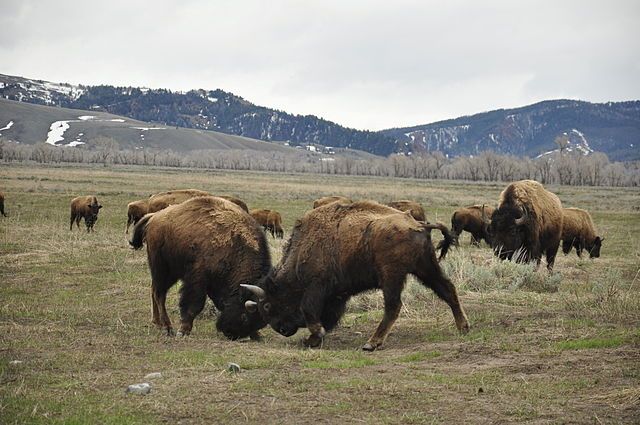Free Roaming Bison

Out-of-state environmental groups and the Montana Department of Fish, Wildlife, and Parks are determined to establish herds of wild, free-roaming bison in Montana. If they are successful, the impacts will be borne by private landowners in the form of property damage, lost feed and forage, and health and safety risks to livestock, pets, and humans. Worst of all is the danger of a catastrophic herd loss that would result from a brucellosis transfer.
Livestock or Wildlife?
Bison aren’t like other wildlife. Their capacity for crop, range, and property damage far exceeds that caused by other species of wildlife. This is the primary reason that Montana FWP and the environmental groups they’re collaborating with are insistent that bison be classified as wildlife, not livestock.
With a livestock classification, landowners have recourse—the owner of the bison is financially responsible for the damage they cause, and they’re responsible for removing bison that stray onto property where they’re not supposed to be. With a wildlife classification, landowners have no recourse. Landowners would have to absorb the costs of any damage. And there would be no one responsible for removing animals that end up where they’re not wanted. In fact, for the environmentalists pushing this idea, that’s the whole point: they want bison to go wherever they want, regardless of whether the owner of the property wants them there or not.
Montana FWP knows that free-roaming bison only works if private property owners are forced to pay the costs. There is no way the state could pay the massive costs of property damage that will follow the introduction of a free-roaming herd. So the solution is simple—make someone else pay.
What comes next?
Many want to see a solution to deal with the bison overpopulation that has resulted in Yellowstone National Park as a result of abhorrent management practices by the federal government. A reasonable solution would be to allow YNP bison that are proven to be brucellosis-free (via quarantine and testing) to be transferred to places where they are wanted. Already, Montana Indian Tribes and private property owners are leading the way on bison restoration by providing a home for bison. As livestock, if these bison escape, their owners retrieve them. And as livestock, some one is responsible for paying for damage they cause.
YNP bison could also be placed on public land, as long as that property were fenced to keep the bison enclosed. In a public-land scenario, the bison should also be considered livestock and managed by the Department of Livestock.
Despite the reasonable solutions put forth by Montana landowners, FWP remains persistent in forcing herds of wild bison on private property.